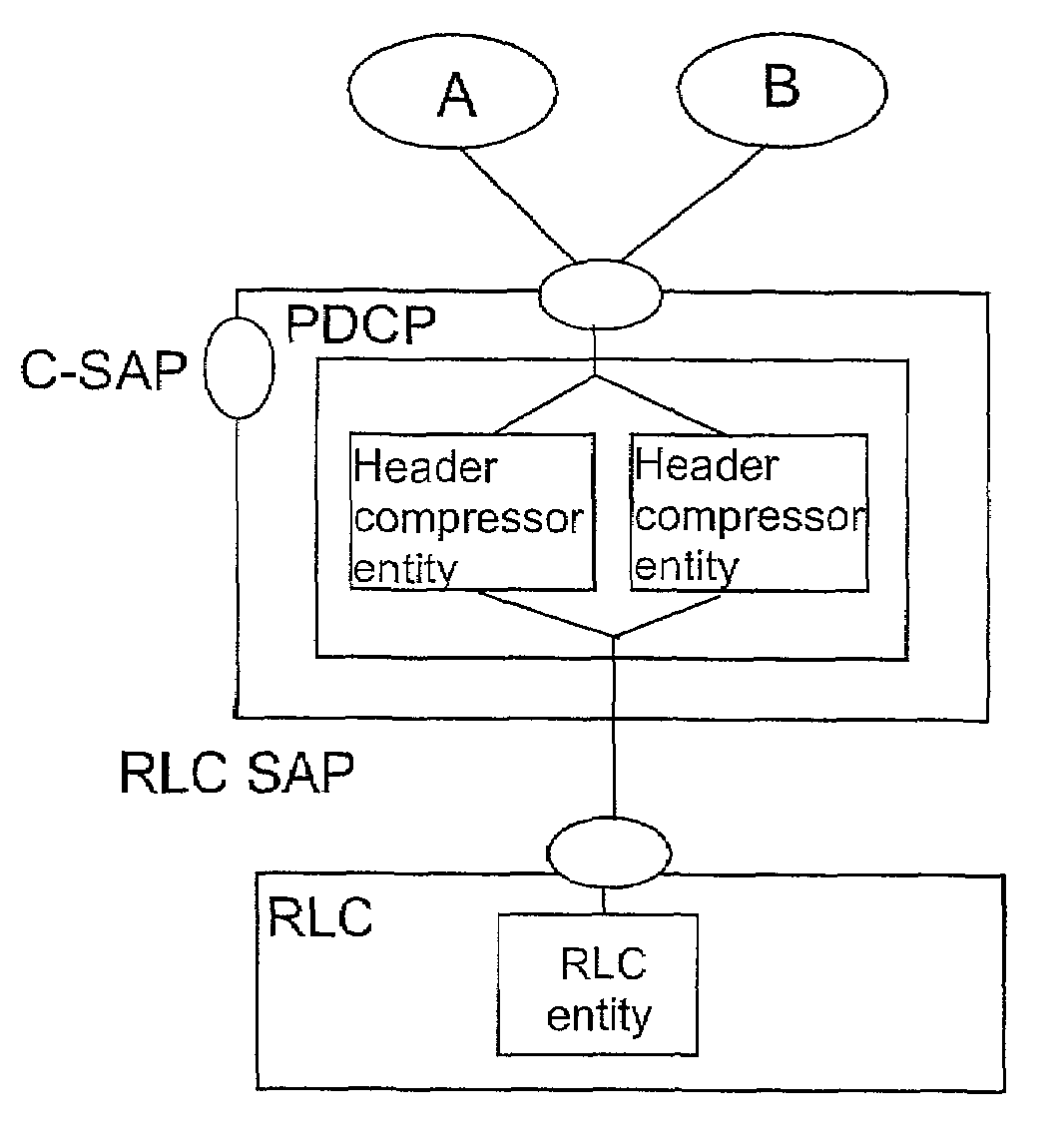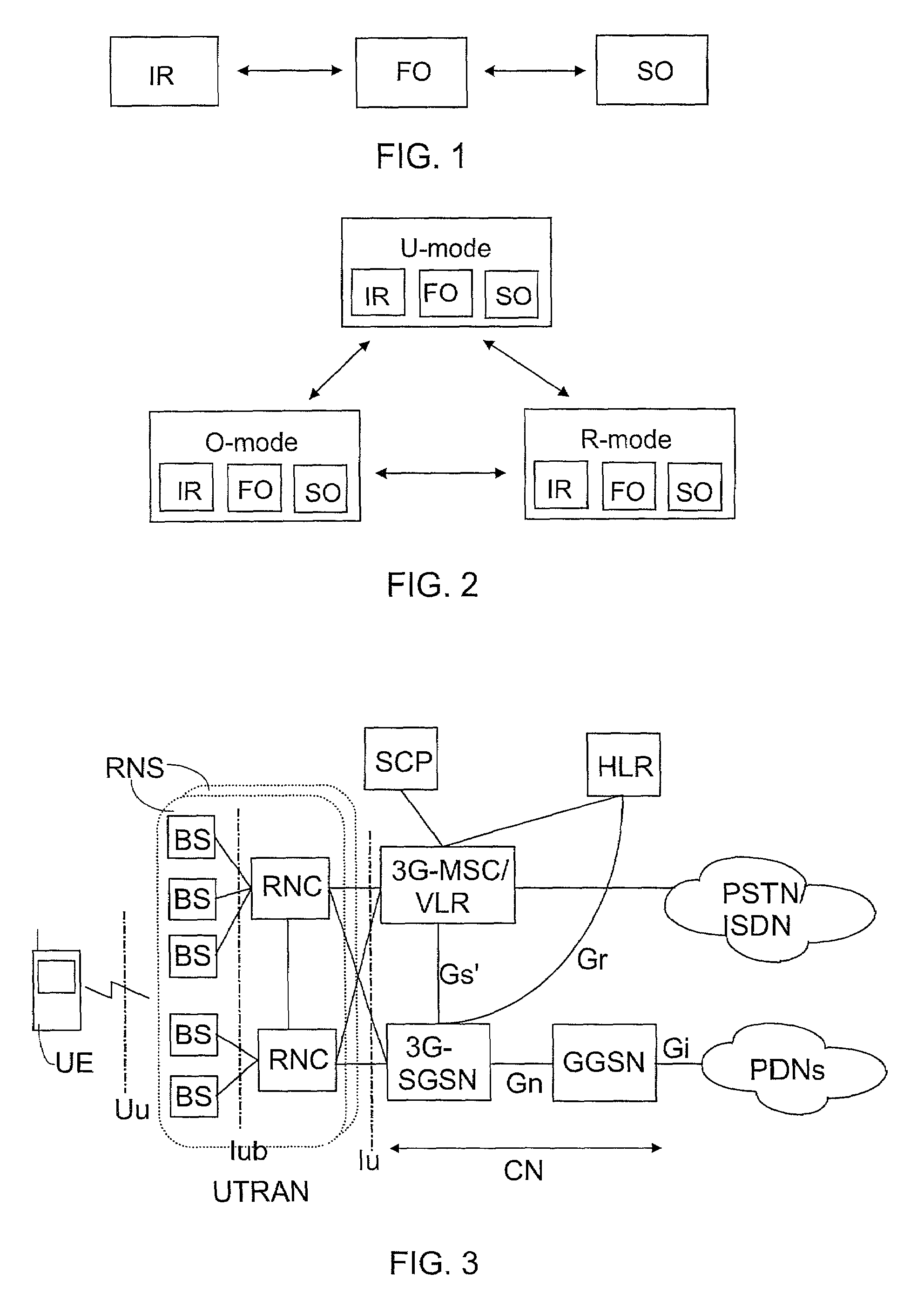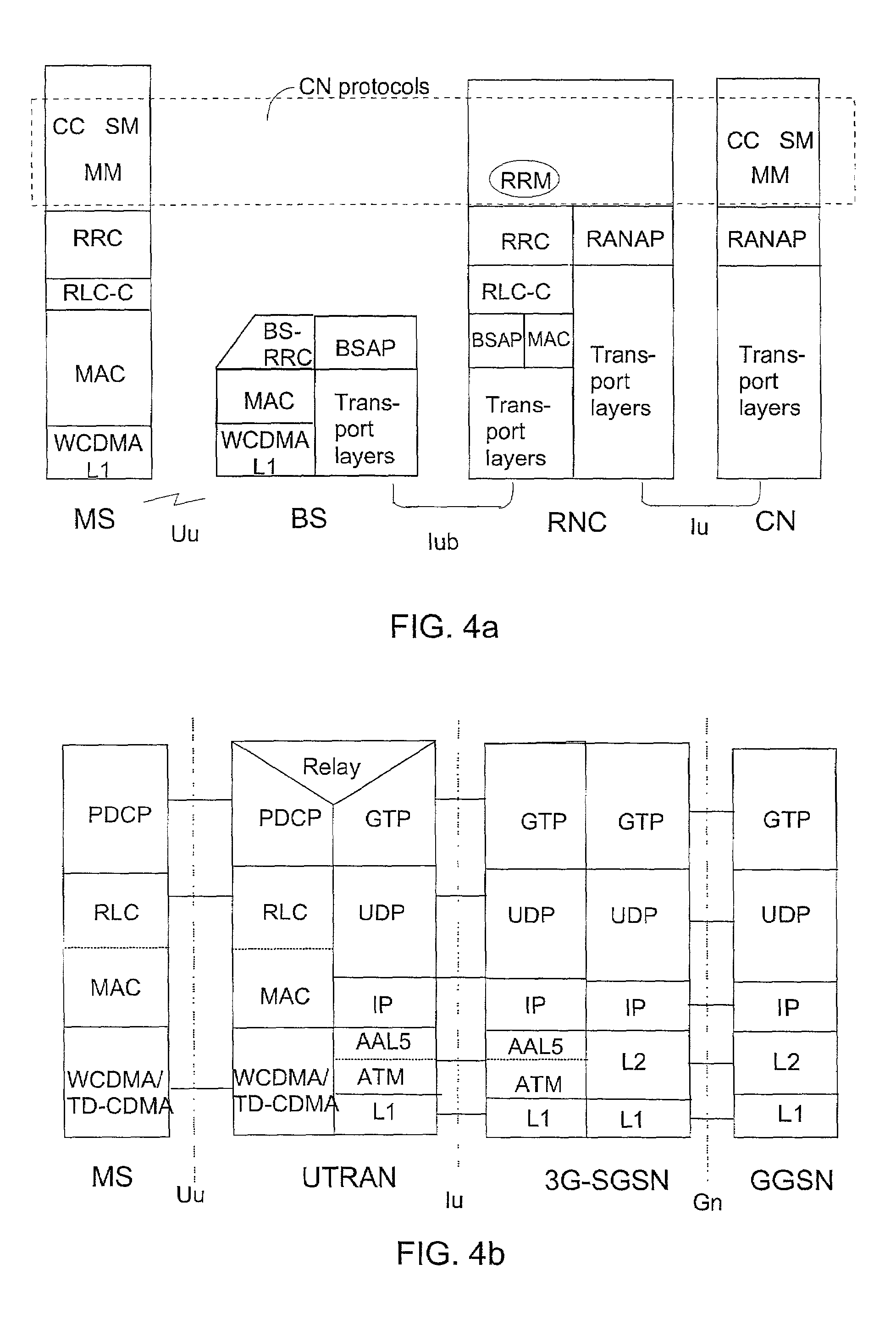Defining header field compression for data packet connection
a data packet and header field technology, applied in data switching networks, code conversion, multiplex communication, etc., can solve the problems of small payload proportion, complicated utilisation of ip protocols in radio interfaces, and low bit error rate (ber)
- Summary
- Abstract
- Description
- Claims
- Application Information
AI Technical Summary
Benefits of technology
Problems solved by technology
Method used
Image
Examples
first embodiment
[0046]According to the invention, the definition described above can be performed by means of ROHC so that the ROHC algorithm is defined in such a manner that at least one value, preferably the last one, of the length of the context identifier CID, i.e. CID space, negotiated for each radio bearer is always reserved for an uncompressed data flow. Thus, it is possible to ensure that the data connections already in use can be transmitted compressed and, at the same time, a new data connection can be established without compression. The ROHC algorithm can, for instance, be defined on the basis of the negotiation between the compressor and decompressor in such a manner that if the length of the context identifier field is set to zero, the first 15 data flows are compressed, and if the user of the terminal tries to form a new (16th) data flow, it and any simultaneous data flows formed after it are transmitted uncompressed to the receiver. A CID field is attached to the uncompressed data p...
second embodiment
[0047]According to the invention, the convergence protocol layer PDCP monitors the number of data connections and if the number of allowed data connections is exceeded, the PDCP layer informs the radio resources control protocol RRC of this, which then performs radio bearer reconfiguration during which the radio bearer parameters, especially the length of the context identifier, are re-defined so that the header fields of each data flow can be compressed according to ROHC. For instance, if the length of the radio bearer context identifier is set to zero and the PDCP layer detects 17 or more simultaneous data flows, the radio bearer is re-configured, whereby the maximum value of the context identifier field is defined to be larger than zero. This requires that a new functionality is added to the PDCP layer to monitor the number of data connections of each radio bearer. If the number of data connections on a radio bearer corresponds to the maximum value of the context identifier lengt...
third embodiment
[0049] the UMTS entity (e.g. session management protocol SM) which, when a data connection is being established, decides, to which radio bearer the new data flows belong, is, when the data connection is being established, informed of the limitations caused by the maximum value of the context identifier to the number of simultaneous data connections, especially when the length of the radio bearer context identifier is set at zero. If 16 data flows are then in use and a need for 17 or more simultaneous data flows is detected, a new “extra” data flow can be defined its own radio bearer or the first radio bearer is re-configured and the length of the context identifier field is given a larger value than zero. In both cases, the header fields of each data flow can be compressed according to ROHC. In this embodiment, too, one must especially take into consideration a situation, in which, due to the limited properties of the terminal, the highest number of simultaneous data connections is ...
PUM
 Login to View More
Login to View More Abstract
Description
Claims
Application Information
 Login to View More
Login to View More - R&D
- Intellectual Property
- Life Sciences
- Materials
- Tech Scout
- Unparalleled Data Quality
- Higher Quality Content
- 60% Fewer Hallucinations
Browse by: Latest US Patents, China's latest patents, Technical Efficacy Thesaurus, Application Domain, Technology Topic, Popular Technical Reports.
© 2025 PatSnap. All rights reserved.Legal|Privacy policy|Modern Slavery Act Transparency Statement|Sitemap|About US| Contact US: help@patsnap.com



